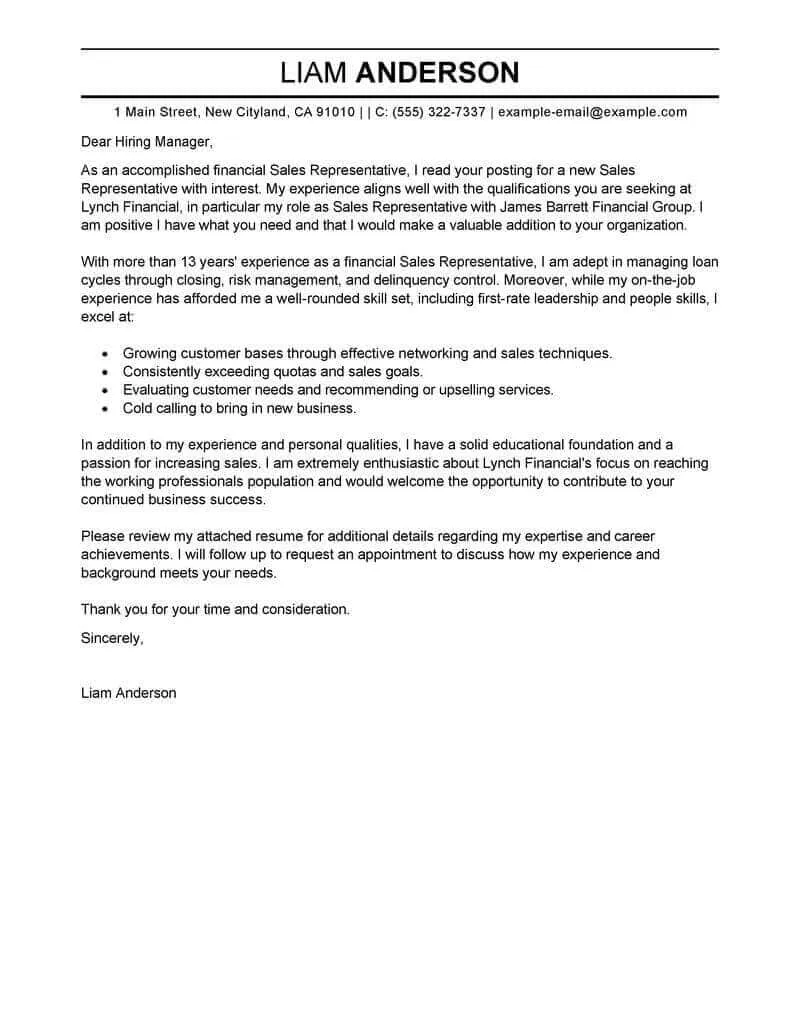Why a Strong IT Cover Letter Matters
In the competitive world of Information Technology, a well-crafted cover letter can be the key that unlocks your dream job. While your resume provides a snapshot of your skills and experience, your IT cover letter offers a valuable opportunity to tell your story, demonstrate your passion, and showcase your unique value proposition. It is your chance to make a strong first impression, providing a more personal and engaging view of your capabilities than a resume alone can offer. Recruiters and hiring managers often use cover letters to assess your communication skills, attention to detail, and overall suitability for the role. A compelling cover letter can set you apart from other applicants, highlighting your enthusiasm and qualifications. It helps the recruiter understand why you are the best fit for the specific IT job, demonstrating that you understand the company’s needs and are excited about the opportunity. Failing to submit a strong cover letter can mean your application is overlooked, regardless of how impressive your resume may be. Therefore, investing time and effort into crafting a professional, tailored cover letter is essential for any IT professional seeking to advance their career.
Key Components of an Effective IT Cover Letter
A successful IT cover letter is more than just a formality; it is a strategic marketing tool that highlights your qualifications and sets you apart from the competition. Structuring your cover letter effectively can significantly improve your chances of landing an interview. A strong cover letter typically consists of several key components. First, start with your contact information, followed by the date and the hiring manager’s contact information. Next, your introduction should immediately grab the reader’s attention and state the position you are applying for. In the body of your letter, emphasize your relevant skills, experience, and achievements, providing specific examples that demonstrate your capabilities. Make sure to tailor your cover letter to each job, highlighting how your skills align with the job requirements. Use keywords from the job description. Quantify your achievements whenever possible to show the impact of your work. Include a clear call to action that encourages the hiring manager to contact you for an interview. Finally, proofread your letter meticulously to ensure there are no errors in grammar or spelling. A well-structured cover letter is not only readable but also showcases your professionalism and attention to detail.
Your Contact Information and Introduction
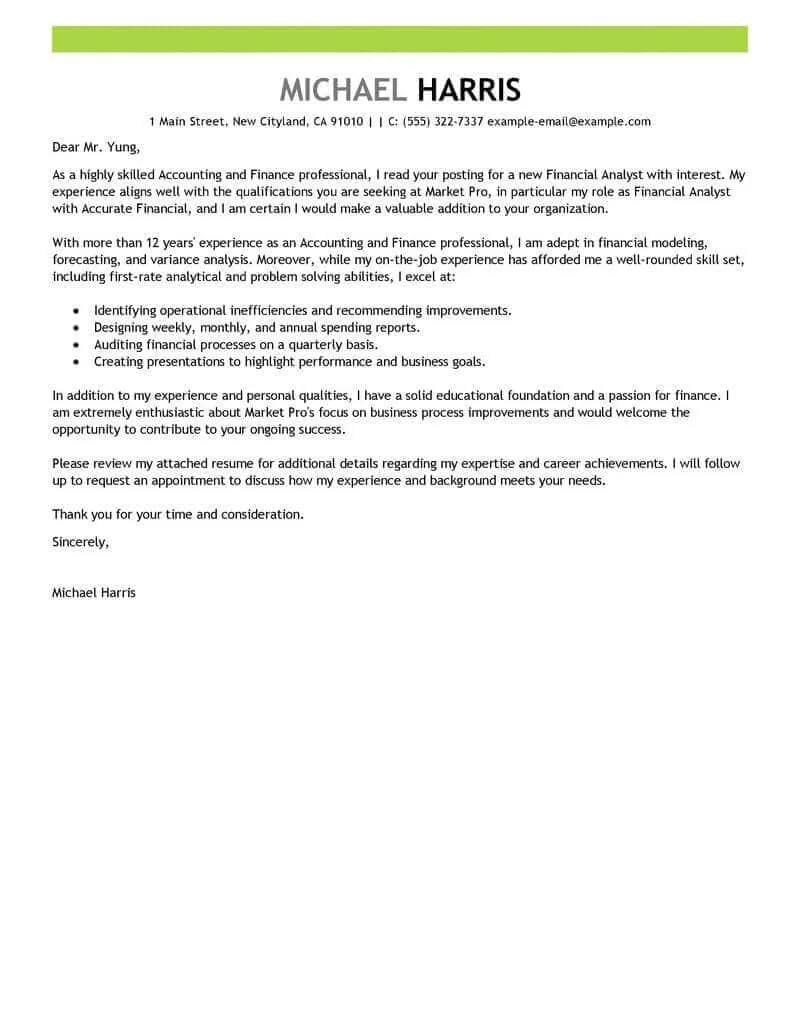
The initial section of your IT cover letter is crucial for establishing a professional tone and providing essential contact information. Begin by clearly stating your full name, address, phone number, and email address at the top of the document. This information allows the hiring manager to easily contact you. Next, include the date and the recipient’s contact information, including the hiring manager’s name and title. If you can’t find the hiring manager’s name, try to address the letter to the hiring team or ‘Dear Hiring Manager’. Your introduction should be concise and impactful, immediately stating the specific IT position you are applying for and where you found the job listing. Briefly mention why you are excited about the opportunity, demonstrating your enthusiasm for the company and the role. You can also include a brief statement about your key skills and experience that align with the job requirements. The introduction sets the stage for the rest of your cover letter, so make sure it is engaging, and conveys your interest and qualifications right from the start. A strong introduction will encourage the reader to continue and learn more about your qualifications and why you are a great fit for their team.
Highlighting Your IT Skills and Experience
The core of your IT cover letter lies in effectively showcasing your skills and experience, aligning them with the specific requirements of the job. Start by identifying the key skills and qualifications mentioned in the job description. Then, provide concrete examples of how you have utilized these skills in past roles. Use action verbs to describe your accomplishments, demonstrating your proficiency in areas like network administration, software development, cybersecurity, or project management. Provide specific examples of projects you’ve worked on, technologies you’ve mastered, and problems you’ve solved. For instance, if the job description requires experience with cloud computing, describe how you have successfully implemented or managed cloud solutions, quantifying your achievements whenever possible. Always tailor your examples to match the job description and highlight the most relevant aspects of your experience. By demonstrating a clear understanding of the role and the skills required, you can significantly increase your chances of securing an interview. Don’t just list skills; illustrate how you’ve applied them to achieve tangible results, which showcases your value and expertise. Showcasing your experience should be targeted and well-articulated to show the hiring manager that you can perform the work.
Quantifying Your Achievements in IT
One of the most effective ways to make your IT cover letter stand out is by quantifying your achievements. Instead of simply stating what you did, provide measurable results that demonstrate the impact of your work. This gives hiring managers concrete evidence of your skills and accomplishments. For instance, instead of saying, ‘Managed network infrastructure,’ you could say, ‘Managed network infrastructure, resulting in a 20% reduction in downtime and a 15% improvement in network speed.’ Similarly, when discussing software development projects, quantify your contributions by mentioning the number of users or the performance improvements. If you have improved system efficiency, quantify the percentage increase. If you have reduced costs, state the specific amount saved. Use numbers, percentages, and specific figures to provide concrete evidence of your accomplishments. This not only makes your cover letter more compelling but also helps hiring managers quickly assess the value you can bring to their team. By quantifying your achievements, you are demonstrating your ability to deliver results and contribute to the company’s success.
Tailoring Your Cover Letter to the Job
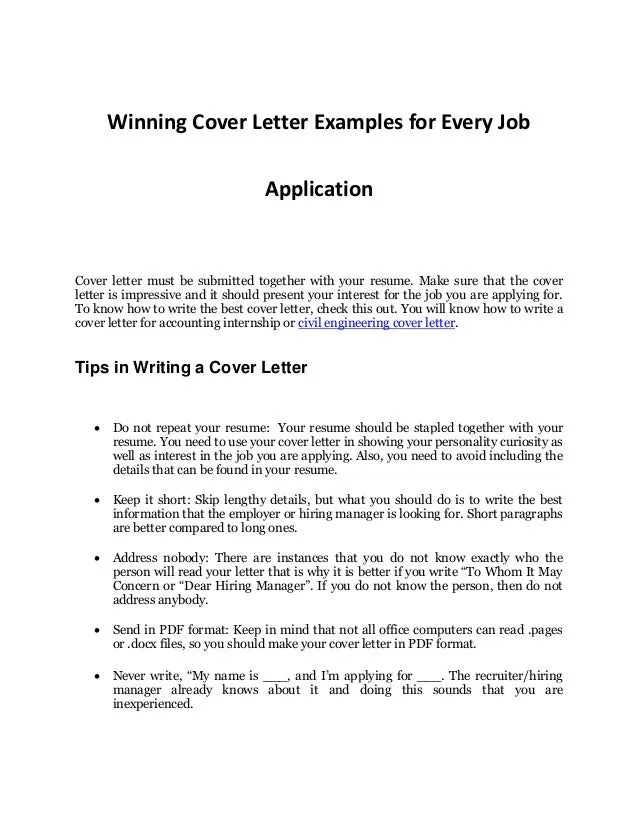
One of the most common mistakes is sending generic cover letters. To truly impress hiring managers, tailor your IT cover letter to each specific job application. Start by carefully reviewing the job description and identifying the key requirements, skills, and qualifications that the employer is seeking. Customize your cover letter to address these specific needs. Highlight the relevant skills and experience that align with the job requirements, providing specific examples to illustrate your capabilities. Research the company to understand its mission, values, and recent projects. Mention how your skills and experience align with the company’s goals. This shows the hiring manager that you have taken the time to understand their needs. Avoid using generic phrases or clichés; instead, use language that directly reflects the job description and the company culture. By tailoring your cover letter, you demonstrate your genuine interest in the role and your ability to contribute to the company’s success. Personalization can set you apart from other candidates and significantly increase your chances of getting an interview. This shows that you are serious about the opportunity.
Cover Letter Examples for Different IT Roles
Different IT roles require different skill sets and experiences, which is why tailored cover letter examples for various positions are essential. Here are some examples demonstrating how to customize your cover letter for different IT roles:
IT Support Specialist Cover Letter Example
For an IT Support Specialist role, your cover letter should emphasize your technical support skills, problem-solving abilities, and customer service experience. Highlight your experience with troubleshooting hardware and software issues, providing technical assistance to end-users, and managing help desk tickets. Mention any certifications, such as CompTIA A+, and showcase your ability to communicate technical information clearly and concisely. Provide examples of how you have resolved complex technical issues, improved user satisfaction, and contributed to a positive IT support experience. Show your proficiency in various operating systems, software applications, and support tools, and always emphasize your commitment to providing excellent customer service. Remember to highlight any specific software and hardware you have experience with and tailor the language and terms used in the job description. Always show that you are passionate about helping others and solving technical challenges.
Network Administrator Cover Letter Example
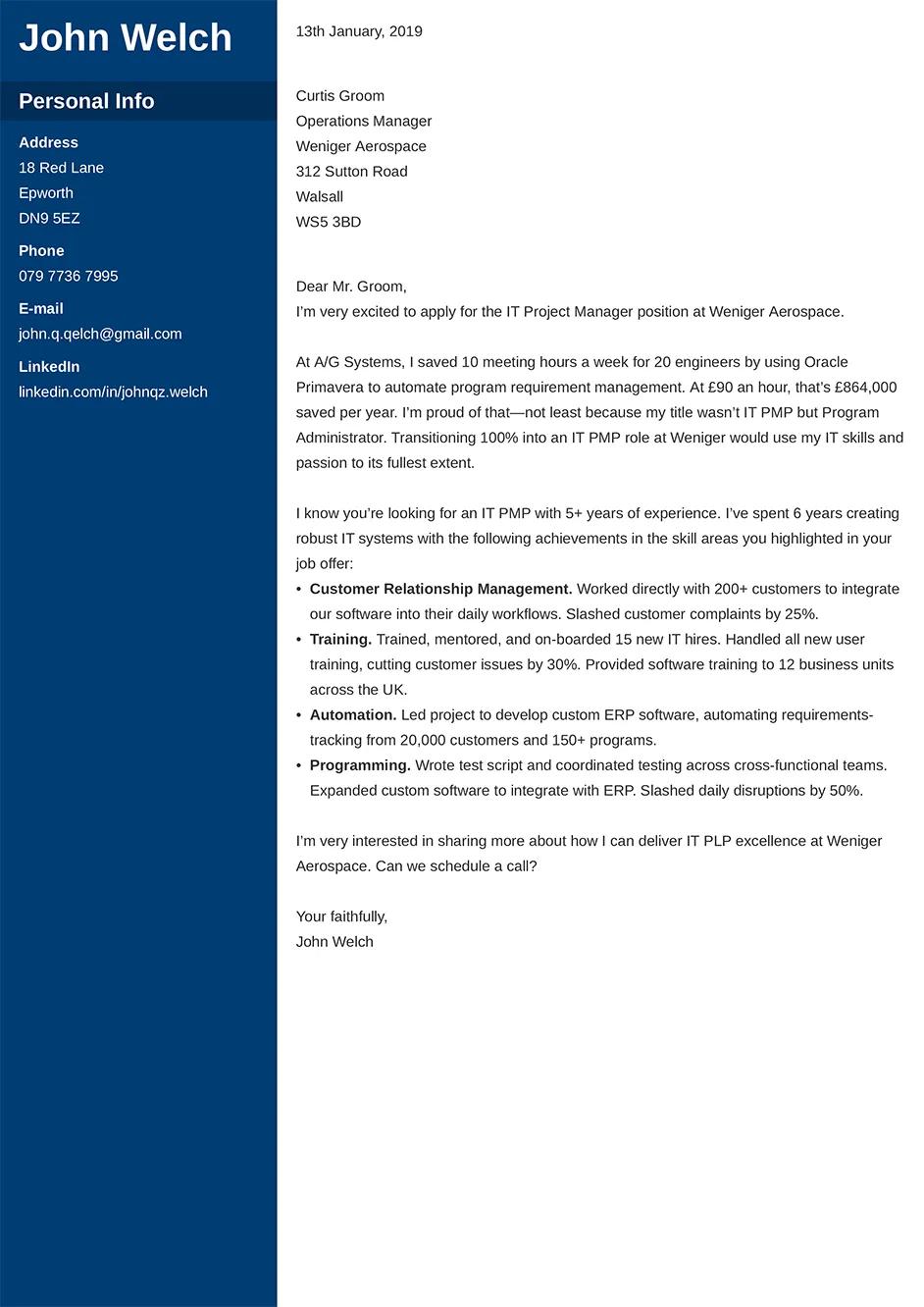
A Network Administrator cover letter should focus on your experience with network infrastructure, security protocols, and troubleshooting. Emphasize your skills in configuring and maintaining network devices, such as routers, switches, and firewalls. Highlight your experience with network monitoring tools, security implementations, and disaster recovery strategies. Mention your certifications, such as Cisco Certified Network Associate (CCNA) or other relevant credentials. Showcase your ability to ensure network stability, security, and performance. Provide specific examples of how you have improved network efficiency, implemented security measures, and responded to network incidents. Provide examples of network design, and network security, and how you have maintained network infrastructure. Always highlight that you are responsible and can resolve a problem if it arises and keep the network running smoothly.
Software Engineer Cover Letter Example
For a Software Engineer role, emphasize your programming skills, experience with specific programming languages, and your contributions to software development projects. Highlight your proficiency in languages such as Java, Python, or C++, and showcase your experience with software development methodologies, such as Agile. Describe the projects you have worked on, the technologies you have used, and your role in the development process. If you have experience with specific frameworks or tools, mention them. Include any contributions you’ve made, such as reducing bugs, improving code quality, or optimizing performance. Mention your experience and knowledge of software development, and show how your passion for building robust and scalable solutions translates into quality output, and can contribute to the company. Your main point should be to showcase how you can contribute to the team.
Project Manager Cover Letter Example for IT
A Project Manager cover letter should highlight your project management skills, your experience managing IT projects, and your ability to lead and coordinate teams. Emphasize your proficiency in project management methodologies, such as Agile or Waterfall, and any relevant certifications, such as PMP. Describe your experience with project planning, budgeting, and risk management. Showcase your ability to manage project timelines, allocate resources effectively, and deliver projects on time and within budget. Provide specific examples of successful projects you have managed, highlighting your achievements and the results you have achieved. Describe your leadership style and your ability to communicate with stakeholders at all levels. Always showcase your ability to use project management tools and your dedication to project success. Highlight your experience in project planning, budget management, team leading, and the ability to ensure all project members are on the same page, working towards the same goal.
Common Mistakes to Avoid in Your IT Cover Letter
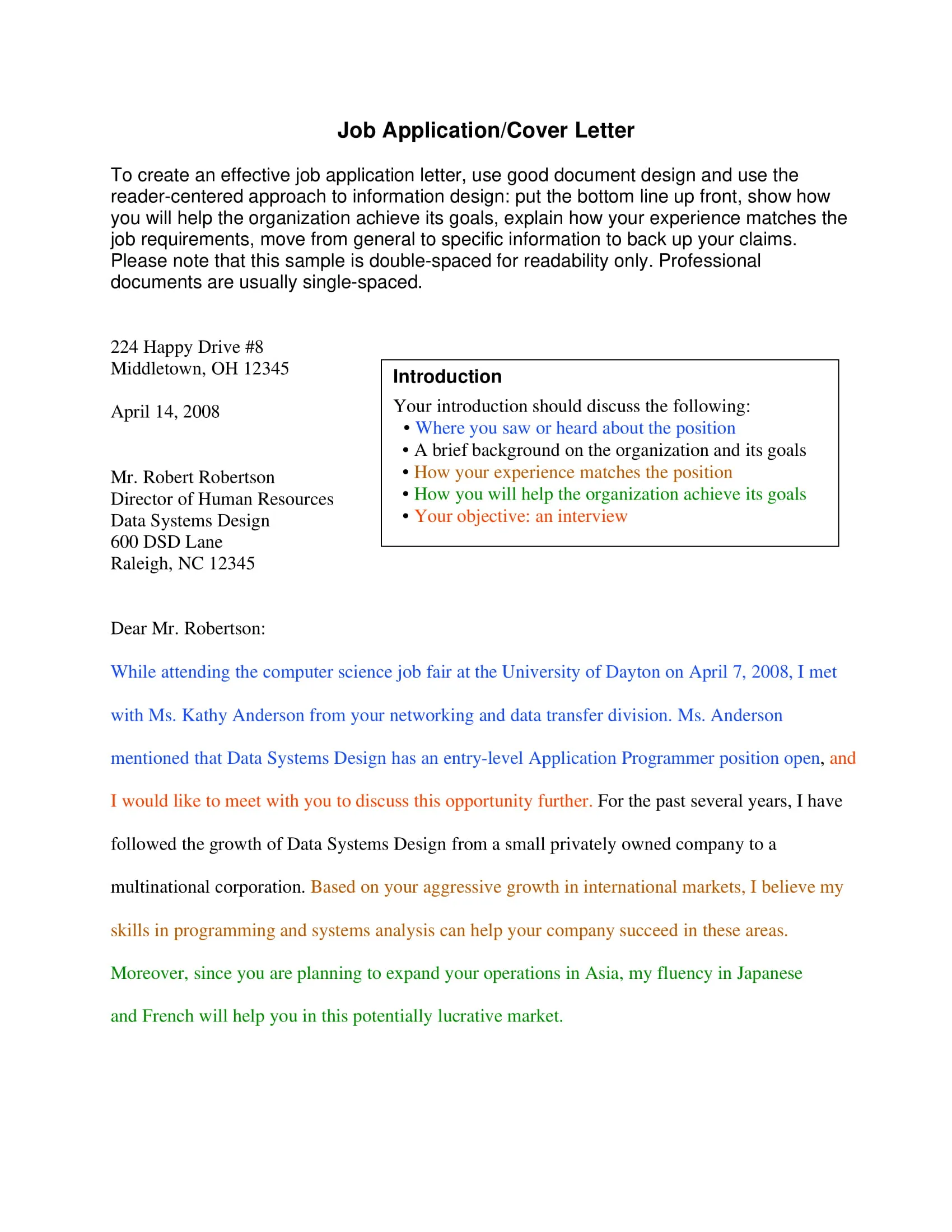
Avoiding common mistakes can significantly improve your cover letter and increase your chances of landing an interview. One of the biggest mistakes is sending a generic cover letter that is not tailored to the specific job or company. Another common error is using excessive jargon or technical terms that the hiring manager may not understand. Also, failing to proofread your cover letter for grammar, spelling, and punctuation errors can create a negative impression. Overstating your skills or experience is also a mistake, so be truthful and honest about your qualifications. Don’t make it too long, and keep it to one page. Another mistake is not highlighting your achievements, so make sure to showcase your accomplishments with quantifiable results. Also, do not just repeat what is on your resume; instead, provide more context and detail. Finally, always be professional, use a professional tone, and avoid using slang or informal language. Your goal is to show your professionalism and skills to the hiring manager.
Proofreading and Formatting Your Cover Letter
Proofreading and formatting your IT cover letter is essential for presenting a polished and professional image. Begin by carefully proofreading your letter for any errors in grammar, spelling, and punctuation. Use a spell checker and grammar checker, but also read the letter aloud to catch any errors that may be missed. Pay close attention to the tone and clarity of your writing. Ensure that your sentences are clear, concise, and easy to understand. Check that your formatting is consistent throughout the document. Use a professional font, such as Times New Roman, Arial, or Calibri, and maintain a consistent font size. Use clear headings and subheadings to break up the text and make it easy to read. Ensure that your paragraphs are well-structured and that there is adequate spacing between them. Use bullet points to highlight key skills and achievements. Before submitting your cover letter, ask a friend or colleague to proofread it for you. Having a fresh set of eyes can help you catch any errors you might have missed. A well-proofread and formatted cover letter demonstrates your attention to detail and commitment to quality.
Concluding Your IT Cover Letter and Call to Action
The conclusion of your IT cover letter is your final opportunity to leave a positive impression and encourage the hiring manager to take the next step. In your closing paragraph, reiterate your interest in the position and briefly summarize why you are the best fit for the role. Thank the hiring manager for their time and consideration. Include a clear call to action. Specifically, request an interview. You can state that you are eager to discuss your qualifications further and look forward to hearing from them soon. Providing your contact information again ensures that the hiring manager can easily reach you. Use a professional closing, such as ‘Sincerely’ or ‘Best regards’, followed by your name and signature. Keep your conclusion brief and to the point. End with a strong and confident tone, expressing your enthusiasm for the opportunity. A well-crafted conclusion leaves the hiring manager with a positive impression, increasing the likelihood of receiving an interview invitation. Always end on a strong note, and reiterate that you are ready and enthusiastic about the job.
